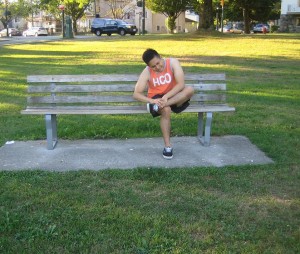It is a known fact that pain and stiffness in the knee commonly occurs. As the biggest joint in the body, the knee sustains a tremendous amount of load with every step taken. Those who engage in sports can experience knee joint stress due to playing rigorous sports such as tennis or running. Individuals who are overweight puts stress on the knee by placing excessive load every time a step is taken. Osteoarthritis is also a condition that can cause knee joint stress since the cushioning in the knee joint is damaged.
Anatomy of the knee
The knee joint is comprised of three bones – femur, tibia and kneecap. The end points of the femur and tibia have a protective layer that helps prevent the bones from grinding on each other. It is important to note that there is a wedge of cartilage present between the tibia and femur that serves as a shock absorber once weight is applied. Take note that the impact sustained from activities such as walking or running causes stress to the protective structures of the knee.
What are the symptoms of knee joint stress?
The symptoms of knee joint stress can include pain when walking particularly once weight is applied to the affected leg. In most cases, the knee joint can become stiff while redness and swelling can also occur especially if the knee joint stress is caused by arthritis.

Diagnosing knee joint stress
The individual must schedule an appointment with a doctor so that he/she will be properly diagnosed and determine the exact cause of the knee joint stress. The doctor will perform a thorough examination. The tests that will be performed include a blood test, MRI, X-ray and CT scans.
Treatment for knee joint stress
Reducing the stress on the affected joint will depend on the cause of the problem. The treatment typically includes reducing the load on the knee joint by instructing the individual to stop activities that places stress on the knee such as kneeling or running. As part of first aid care, you can provide NSAIDs such as ibuprofen to minimize the discomfort and swelling.
In some cases, the doctor might inject cortisol into the knee in order to reduce the pain and improve the mobility. A knee brace must be used to help minimize the discomfort of the knee joint stress while at the same time add stability and prevent further damage to the joint.
As for physical therapy, it helps strengthen the leg muscles surrounding the knee, promoting the normal motion that reduces the risk for knee injuries. Even weight reduction can help out a lot since it drastically reduces the load on the affected joint.
What are the risks?
There are physical activities that can cause stress to the knee joint such as exercise and certain sports. Even kneeling at work or in the garden can cause stress and eventually damage the knee joint. Obesity can also cause knee joint stress due to the additional burden placed on the knee. Individuals with osteoarthritis face a higher risk to knee joint stress since the condition causes damage to the protective structures of the knee.
